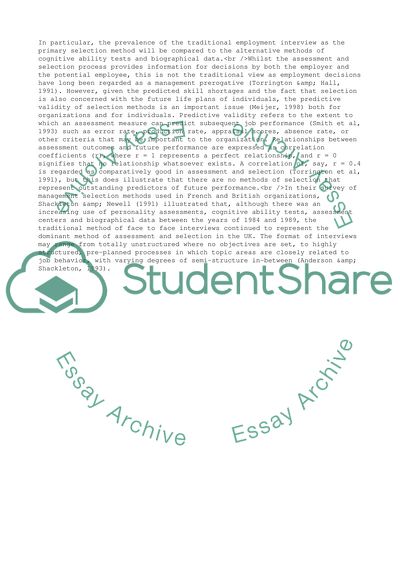Cite this document
(Predictive Validity Coursework Example | Topics and Well Written Essays - 2250 words, n.d.)
Predictive Validity Coursework Example | Topics and Well Written Essays - 2250 words. https://studentshare.org/management/1518392-what-is-meant-by-predictive-validity-why-are-assessment-centres-considered-to-have-greater-predictive-validity-than-facetoface-interviews
Predictive Validity Coursework Example | Topics and Well Written Essays - 2250 words. https://studentshare.org/management/1518392-what-is-meant-by-predictive-validity-why-are-assessment-centres-considered-to-have-greater-predictive-validity-than-facetoface-interviews
(Predictive Validity Coursework Example | Topics and Well Written Essays - 2250 Words)
Predictive Validity Coursework Example | Topics and Well Written Essays - 2250 Words. https://studentshare.org/management/1518392-what-is-meant-by-predictive-validity-why-are-assessment-centres-considered-to-have-greater-predictive-validity-than-facetoface-interviews.
Predictive Validity Coursework Example | Topics and Well Written Essays - 2250 Words. https://studentshare.org/management/1518392-what-is-meant-by-predictive-validity-why-are-assessment-centres-considered-to-have-greater-predictive-validity-than-facetoface-interviews.
“Predictive Validity Coursework Example | Topics and Well Written Essays - 2250 Words”. https://studentshare.org/management/1518392-what-is-meant-by-predictive-validity-why-are-assessment-centres-considered-to-have-greater-predictive-validity-than-facetoface-interviews.


